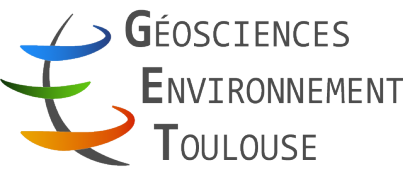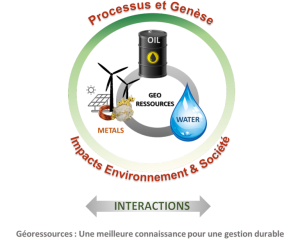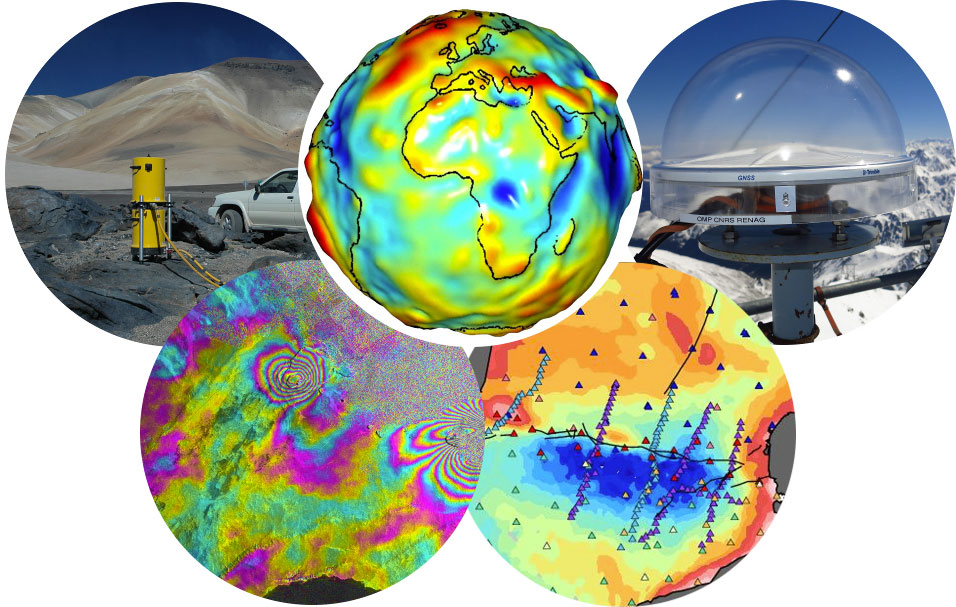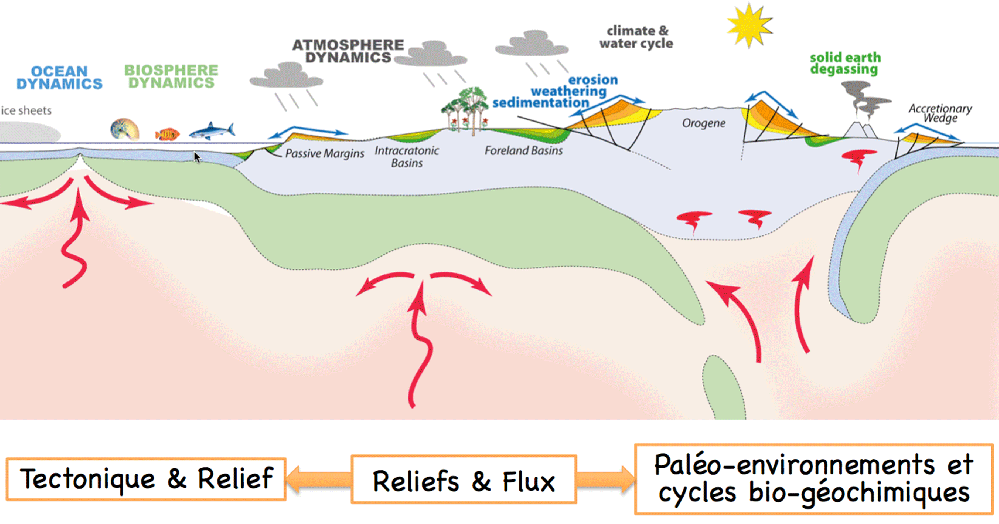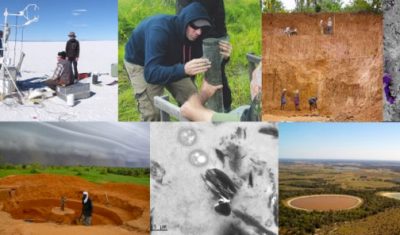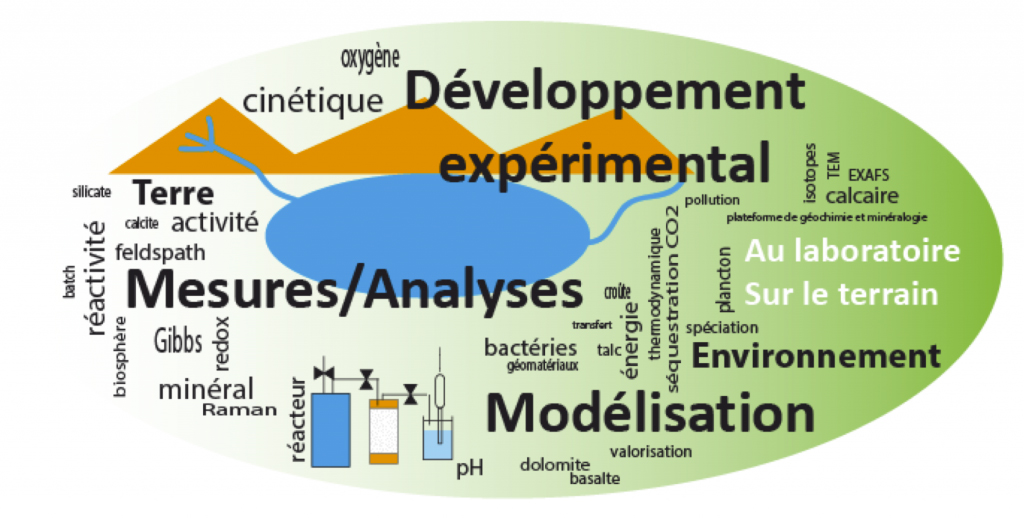One of the GET’s strengths is its ability to integrate various means of Earth observation.
- Preparation / Exploitation of Space Missions – Solid Earth / Hydrology
- Services to the International Community – Geodesy / Hydrology / Oceanography / Geochemistry
- Instrumentation & Experimentation – Geochemistry / Geophysics / Hydro-meteorology
| ANR PRC BREATHE – La bio-surveillance magnétique des émissions de particules fines: Un partenariat sciences et citoyens sur la qualité de l’air; 2019-2022 (PI P. Camps GM; co-PI GET M. Macouin, S. Rousse) |
| ANR PRC MOSAI – Modèles et Observations pour les Interactions entre la Surface et l’Atmosphère ; 2020-2025 (Coord GET J. Darrozes) |
| PIA EQUIPEX TERRA FORMA – Terra Forma : déployer un réseau dense de capteurs pour comprendre et répondre aux défis environnementaux ; 2021-2029 (Coord GET D. Point) |
| PIA EQUIPEX DEEPSEA’NNOVATION – Capteurs et prélever innovants et de rupture pour les sciences marines grand fonds ; 2021-2029 (Coord GET V. Chavagnac) |
| INTERREG PREST CARAIBE – Plateforme régionale de surveillance tellurique du futur INTERREG CARAIBE (Coord GET V. Clouard) |
| Meteo France Raincell – Assister Météo-France au développement d’une chaine opérationnelle de caractérisation des précipitations à partir des perturbations des liens hertziens d’Orange ; 2022-2025 (Coord. GET M. Gosset) |
| Contrat de collaboration 2021-2024 Weather Force/IRD – projet Raincell ; 2021-2024 (Coord GET M. Gosset) |
| Convention de partenariat régional RMQS2 : Réseau de Mesures de la Qualité des Sols ; 2016-2018 (Coord GET P. Oliva) |
| SHOM (SCE HYDROGRAPH OCEANOGRAPHIQUE MARINE) MODBATH – Etude de la modélisation de la bathymétrie à partir de l’altimétrie ; 2023-2024 (Coord GET L. Seoane) |
| SCREEN FOND Agence Dévelopement Francaise via l’OMVS – Renforcement du suivi hydrologique par satellite dans le bassin du fleuve Sénégal ; 2023-2025 (Coord. GET M. Gosset) |
| Projet ISIFOR IMAGHYN – Couplage IMAgerie Géophysique passive et suivi in-situ des émanations d’HYdrogène Natif dans les Pyrénées ; 2021 (PI V. Chavagnac) |
| Projet ISIFOR IMACOM – IMAgerie passive des corps de manteau exhumé dans la région du COMminges ; 2023-2024 (PI S. Chevrot) |
| CNES TERRE SOLIDE BGI COOPE 2023 Lot 2 – Bureau Gravimétrique International ; 2023-2029 (Coord. GET S. Bonvalot) |
| CNES TERRE SOLIDE IGS COOPE 2023 Lot 2 – Traitements GNSS pour l’IGS et les applications précises ; 2023-2029 (Coord. GET A. Santamaria) |
| CNES TERRE SOLIDE GENESIS XFORM85 CDD COOPE 2023 Lot 2 ; 2023-2029 (Coord. GET JC. Marty) |
| CNES TERRE SOLIDE GRACE (Coord. GET JM. Lemoine) |
| CNES OCEAN Satellite COOPE 2023 Lot 2 – Opportunities for Orbit Improvement Using the Jason and Sentinel-6 Series of Satellite ; 2023-2029 (Coord. GET A. Couhert) |
| CNES OCEAN FOAM COOPE 2023 Lot 2 – From Ocean to inland waters Altimetry Monitoring ; 2023-2029 (Coord. GET A. Santamaria) |
| CNES Planetologie MMX COOPE 2028 Lot1 – Champs de gravité ; 2018-2025 (Coord. GET JC. Marty) |
| CNES SHM METEOESP COOPE 2028 Lot1 – Analyse et modélisation Thermosphère ; 2018-2025 (Coord. GET S. Bruinsma) |
Structures involved in the laboratory
| Trans-disciplinary Scientific Axes |
|---|
| Marine Geosciences |
| Modeling |
| Remote Sensing |
| National Observation Services |
|---|
| SNO HYBAM (leader) |
| SNO KARST (leader) |
| SNO M-TROPICS (leader) |
| SNO AMMA-CATCH (partner) |
| SNO DYNALIT (partner) |
| SNO RENAG (partner) |
| SNO BGI (host) |
| SNO EMSO-Açores (partner) |
